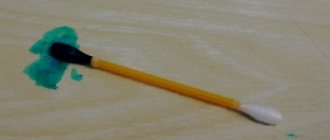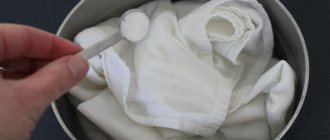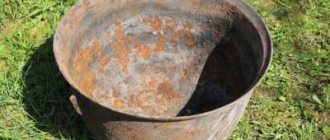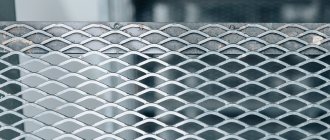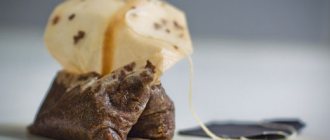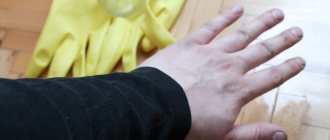It is very easy to get your hands dirty with resin, pine or epoxy. The viscous composition tends to harden quickly in air.
This raises the problem of how to wipe the resin off your hands thoroughly and safely. Proven home recipes and household chemicals that act as solvents come to the rescue.
If you are interested in how to remove resin from your hands, read this article.
What to do if resin gets on your skin
The first rule is don't panic.
Epoxy glue, although it is a complex two-component material, is in fact not dangerous if it does not interact with the skin for a long time. Let us now consider several methods that are guaranteed to remove epoxy resin from your hands.
The resin cannot cause extensive lesions or skin infections. But acute pain is guaranteed. In addition, burns are possible when working with heated material.
Therefore, in case of contact with skin, the resin should be removed using any cloth. And the remaining thinner layer must be removed with alcohol or any solvent.
As mentioned earlier, when working with chemicals, you must wear protective clothing.
But if restoration work is delayed, for example, when gluing a rubber boat, then latex gloves can easily tear and allow the product to reach the skin of the hands. In this case, you need to take the following steps.
- Remove the gloves from your hands immediately and discard them; you will no longer need them.
- Wash your hands immediately with laundry or tar soap.
- After the bulk of the product has been washed off, it is necessary to dissolve the remaining stains of the product on the skin. For cleaning, you can choose acetone, nail polish remover, denatured alcohol, etc. Soak a cotton swab in the liquid and carefully wipe the glue off your hands.
- After a positive result, wash your hands again with baby soap that has a softening effect.
- Solvents are no less harmful to the delicate skin of your hands; they evaporate moisture from the cells. Therefore, upon completion of cleansing, you should apply a rich nourishing cream to the skin of your hands: baby cream, olive cream.
How to clean coniferous (from pine) and wood?
Liquid tree resin is a thick, viscous substance. It can stick to the skin when walking in the forest or while climbing trees. If the stain is not removed immediately, the resin will harden. To remove it, you will need to soften the composition, returning it to its ductility.
Compounds at hand
The following tools will help you deal with tree resin on your hands:
Vegetable oil
Using vegetable oil is a safe and easy way to get your hands in order. This option is suitable for everyone - even those with dry skin and children.
How to use:
- Apply oil to a sponge or tampon.
- Rub the tar stain on your hand for half an hour. During this time, the skin should be completely cleansed.
- Wash your hands in hot water and soap.
You can use regular sunflower oil, which you have in the kitchen, to wipe off the resin.
Alcohol
Alcohol is used to remove large amounts of dirt. It does not irritate the skin and does not harm the body even with prolonged contact, so this method is suitable even for a child.
How to use:
- soak the sponge in alcohol;
- apply to the stained area for 15-20 minutes, making sure that the sponge does not dry out;
- Rub the stain with a piece of gauze.
Rubbing alcohol can be purchased at a pharmacy.
Lemon acid
Food grade citric acid, which comes in powder form, is good for cleaning your hands from tree resin. The effectiveness of the drug occurs due to the presence of acid.
Using the drug is not difficult:
- Wet the sponge with water.
- Dip one edge into the acid powder.
- Rub the stained area.
- Wash off with warm water and soap.
For people with sensitive skin and children, citric acid may cause irritation.
Chemicals
Coniferous and tree resin can be washed off using not only improvised means, but also household chemicals:
Stain remover
Almost any stain remover can be used as a solvent. It is more convenient to use in a liquid form, for example, Vanish.
The product is applied to the stained area and left for a couple of minutes. If the gel drips, you can soak the sponge well with it and apply it to the stain.
After the resin has become viscous, it is cleaned off with a washcloth and hands are washed. Price – from 170 rubles per bottle.
Turpentine
In order to remove a small stain of tree resin from your hands, just a few drops of turpentine are enough . Apply it to the sponge and rub the stained area, making sure that the entire stain is treated. After removing the resin, wash your hands. Price – from 50 rub. for 0.5 l.
Washing powder
You can use any powder, but it is better for washing white clothes. It is applied to the affected area and rubbed vigorously.
With this effect, the resin will form pellets, being removed from the surface of the hands. Complete the treatment by washing your hands and applying nourishing cream .
The cost of Persil washing powder starts from 100 rubles per 450 gram package, but you can choose a detergent that is cheaper.
Where are resin contaminations most often located?
The most common way to use epoxy resin is as an adhesive. Epoxy glue is an old proven tool for repairing rubber products, shoes, gluing wooden and ceramic surfaces.
In domestic conditions, glue most often gets on unprotected areas of the skin of the hands, as well as on items of clothing. Therefore, it is strongly recommended to work with glue wearing protective gloves and an apron.
If the substance does get on the skin, it is necessary to take immediate action, since synthetic resin is an aggressive chemical and can cause burns to the epidermis, dermatitis, and allergic reactions.
Conifer resin
Resin stains are one of the most difficult stains for any surface.
A walk through a forest filled with the aroma of pine needles at any time of the year can give a boost of healthy energy for several days. However, when you return home, you can bring with you not only pleasant impressions, but also sticky resin threads stuck to the skin of your hands, outerwear - a jacket or coat, and even to your hair - this can happen to children if they ran between trees and threw pine cones. There is also a risk of getting dirty with resin when working with coniferous wood. It is impossible to wash off hardened resin - the resin of pine trees, cedars and other coniferous trees - with ordinary water, but there are other ways to wipe off its traces at home.
Removing epoxy resin from hands using Coca-Cola
In this case, Coca-Cola helps not only boil the kettle, but also remove epoxy from your hands. In fact, in addition to the famous cola, Fanta, Sprite, Pepsi and other similar drinks are suitable.
How to prepare a mixture for removing epoxy from hands:
- For 1 liter of Cola, take 1 tbsp. spoon of soda
- Shake Stir
- Wash your hands in the solution
- The duration of washing is no longer than 10 minutes
- Rinse off with plain water
- Wash your hands again with soap and apply baby cream
Features of cleaning a child's skin and hair
Kids often get dirty while walking. They love to collect cones and branches of coniferous trees. This is how an odorous viscous liquid appears on their hands and clothes.
It is useless to wash off resin from children's skin with water: the substance will only harden faster and adhere better. Then it will be almost impossible to clean up the contamination. Water is effective only when the remaining substances are completely washed away.
You can leave everything as is. Little by little, the tar stains will disappear on their own. But such a process will take a lot of time. The resin comes off much faster after treating the baby's hands with baby cream. It is optimal to take the fattest product.
Instructions:
- Children's skin is lubricated with cream.
Baby cream is suitable for removing tar from baby's delicate skin - Remove remaining resin with a dry cloth.
Neither alcohol, nor acetone, nor white spirit can be used to remove any type of resin from a child’s skin . The substances are harmful to children's health. Only natural products are used. The best of them is vegetable oil.
Apply baby oil or any natural oil to the stain.
If the baby is very dirty in spruce resin, then you can clean the stains with citric acid or fresh lemon juice. However, it is more effective to combine the action of acid and water, using the method when washing a tomboy. This action will take a lot of time. Half an hour minimum, if the baby has had enough time to cuddle with trees during a walk and has collected enough oleoresin “in reserve.”
It is not easy to remove resin from hair. The best option is still a haircut. Alternatively, combing the locks with oil is acceptable. With the help of ice, it is possible to “freeze” the resin and remove it from the hair. But the method is painful.
It is acceptable to use ice to remove tar marks from the skin, but this method can cause a cold. You can use ice to remove tar from your hands, but not from your child’s back, belly, or legs.
Dried resin on hands - how to wash it off?
Renovation work is very exciting, especially for hardworking men. And often resin stains on the skin of the hands are found already in a hardened form, which can be tried to be washed off in several ways.
- Ice cubes. If you are at home, you can use a cube or piece of ice from the freezer. Rub the dirt vigorously with ice and wait. Under the influence of cold, the glue will dry quickly, and it can be carefully removed from your hands, for example, with the blunt side of a knife.
- Oily liquids. Spread the resin stain with a thick layer of oil: sunflower, olive, cosmetic. As an option, high-fat mayonnaise is sometimes used. Periodically rub the oily substance into the epoxy stain. Then you can try to remove the softened resin from the skin with gentle movements.
- Solvent. Both for hardened stains and for fresh smears of glue, a solvent or various alcohols are used: denatured alcohol, wine alcohol, ammonia, etc.
The question of how to wash off epoxy resin that gets on the skin is far from idle. Not all solvents are used to remove chemicals from hands. Some leave burns, others cause allergens that can trigger eczema. Allergy sufferers should be especially careful when using chemicals.
Be sure to read:
We suggest you read: How to clean an automatic washing machine with vinegar to remove scale and unpleasant odors?
How to dissolve silicone: effective ways to remove sealant from various surfaces
Those who are not afraid of allergic reactions can wash off the epoxy with a swab soaked in 646 solvent or acetone. You can wipe your hands with these substances to remove residual resin from them. Hands are immediately washed with soap and lubricated with protective cream. Before starting to work with epoxy, it is recommended to lubricate the skin of your hands with a protective cream and wear gloves.
Prohibited methods
Some products clean resin well, but have a negative effect on the skin. Their use is not recommended.
Hot way
It is effectively used for cleaning clothes, shoes, household items, but not for the skin of the hands or other parts of the body. The resin is ironed through the parchment with a hot iron. At high temperatures, the substance softens and can be removed with a sponge or cloth.
This method should absolutely not be used to remove resin from skin. The result can be quite disastrous: from a minor burn to being admitted to traumatology.
Cold cleaning method
It is also used only for household items. The thing stained with resin is frozen. When exposed to low temperatures, the resin crystallizes. After which it is broken with a hammer. You can, of course, try and carefully rub the dirty area on your hand for several minutes with a piece of ice so that the resin hardens. But the desired crystallized structure of the substance cannot be achieved in this way. But getting mild frostbite on the skin is as easy as shelling pears.
Using a cold method of cleaning resin can cause frostbite to the extremities.
Epoxy Solvents and Acid
Chemicals that are designed to clean epoxy resin - DMSO and DMF - can be bought at any pharmacy. They are used to liquefy and dissolve resins. But none of these solvents can be used to cleanse the skin of the hands, face and other parts of the body from resin.
DMF and DMSO do not corrode metals and do not damage plastics based on non-polar hydrocarbons. But some microcircuit/transistor housings can also swell in them, because they can be made on the basis of epoxy resins, especially old ones. Well, you need to be careful when working with them. DMF by itself is not particularly useful, but DMSO improves the transport of substances soluble in it through the skin, therefore it can promote the absorption of something unwanted by the skin.
pashka000
https://radiokot.ru/forum/viewtopic.php?f=3&t=101246&start=20&view=print
DMSO (dimethyl sulfoxide), was previously sold in pharmacies under the name Dimexide (in my opinion, it was diluted with something). Almost all organic matter will be dissolved. Of the minuses - if it stands in the air for a long time, it oxidizes and stinks, and secondly, it transfers dissolved in it through the skin very well, which is why it is contained in all sorts of rubbings, dolobens, fastumgels, etc. (wear gloves)
Klugman
https://www.radioscanner.ru/forum/topic38626.html
SP-6 remover is also a strong solvent. It is designed to remove varnishes and paints from old ferrous metal; it also cleans epoxy resin. True, SP-6 is used in car service centers and at construction sites. After applying the remover, the paint coating swells, breaking down into a loose mass, which is then removed with a brush.
It is strictly forbidden to use SP-6 remover to clean your hands from resin. If the cleaner comes into contact with your skin, immediately wash your hands or other parts of your body with water. If this is not done, a chemical burn is guaranteed. When using SP-6, a chemical burn to the respiratory tract is also possible. After removing the remover, you should consult a doctor.
It is strictly forbidden to use acid to cleanse body parts of resin. After all, sulfuric and tetrafluoroboric acids form an instant chemical burn when they come into contact with the skin. In this case, coagulation necrosis—tissue death—is formed almost instantly. A white crust with clearly defined boundaries instantly forms on the skin. The stronger the concentration of acids, the deeper the wound under the crust.
Acid contact with the skin can cause serious consequences.
Removing epoxy stains from hands using baking soda
Soda is a fairly common reagent that we often use in our households and everyday life. The main advantage of soda is that even if it comes into contact with the skin for a long time, there will be no burn. The main rule when using soda is to not let your hands and surfaces dry out.
How to prepare a mixture for removing resin using soda:
- Prepare a solution in the proportion of 1 tbsp. spoon of water
- Add to this 3 teaspoons of soda
- Make a paste from the resulting mixture
- Carefully apply the paste to the contact site and the resin itself.
- Removing epoxy resin
- Wash off the mixture with warm water
What is the main difficulty
Hands are not hair, but to wash them you need to make every effort. A particular difficulty lies in the fact that you need to get rid of contaminants without damaging the skin by choosing the right product.
It is much more difficult to cope with heavy and long-term contamination when the resin has already hardened. Increased safety measures apply to children, since a child's skin is much more delicate than an adult's.
Non-standard methods for cleaning clothes
You can remove a thin layer of resin from clothing using solvents.
There is no need to try to immediately wipe off fresh resin from clothes - this will spread it over the surface and go even deeper into the threads. You should not wash the item in the machine or rub the stain with laundry soap - this will only worsen the situation. The main difficulty in removing resin stains from fabric is that the resin, which enters the material in liquid form, impregnates it and hardens into the fibers. Removal must be carried out in stages: first, surface contamination is removed, then the internal structure of the threads is cleaned.
Before removing the resin stain, the fabric should be placed in the refrigerator freezer for two hours. The frozen substance is then carefully scraped off the surface of the clothing. Stains on large items that do not fit in the freezer are covered with ice cubes for freezing. However, traces of resin on things made of thin fabric cannot be removed using this method - they can be damaged by scraping.
The second stage consists of using solvents, since it will not be possible to remove stains from the resin of pine and other coniferous trees from fabric without their help. You can clean the material with gasoline, white spirit or turpentine, in which you need to moisten a foam sponge. Pure alcohol or vodka also cleans resin well.
The resin poses the greatest danger to woven materials. These are a variety of jeans, trousers, shirts and so on. If resin gets on such a surface, you must proceed according to the following algorithm:
- The corresponding item of clothing must be placed in the freezer. Low temperature will prevent the diffusion process. That is, resin particles will not be able to penetrate deeply into the fabric. Accordingly, curing will occur on the surface of the garment without affecting the structure of the material. Keep clothes in the freezer for no more than 10 minutes. Prolonged exposure to low temperatures will not improve the result. Therefore, 10 minutes will be enough;
- Then, you need to use a thin metal knife to remove the resin from the surface of the stained object. It is necessary to “pick off” the resin without damaging the fabric itself. To do this, it is advisable to stretch the fabric so that the entire surface of the stain is accessible;
- Typically, there will be a stain where the resin was. It will not be very noticeable if you freeze the clothes in a timely manner. If the resin has managed to penetrate inside the fabric, then the contamination will be more pronounced. To get rid of this stain, you should use alcohol. You need to soak a cotton swab or napkin generously with alcohol. After which, you need to treat the remaining stain.
This method has been carried out repeatedly and is the most effective. In this way I cleaned a stain of epoxy resin with a diameter of 5 cm. I must say that after freezing and alcohol treatment there was absolutely no trace left of the stain.
Frozen clumps of resin on good clothes are an unpleasant phenomenon, but also completely removable.
Advice! Large pieces of dirt must first be mechanically scraped off with a knife or a thin file. This method is applicable only for rough work clothes: overalls, denim trousers, aprons.
Finer fabrics should be cleaned delicately and carefully. You can remove stains at home using well-known products. For best results, glue stains must be frozen. We place the clothes in the freezer for two to three hours, the cleansing process will go faster and more efficiently.
- Alcohols. Wine, ammonia, and denatured alcohol are excellent means for resuscitating your favorite clothes. We moisten a piece of clean rag or a cotton-gauze swab in alcohol and begin to clean the dirty stains. As a rule, with some effort, it is quite possible to achieve complete victory over the dirt.
- Turpentine. Natural pine extract has a good cleansing effect. For fabrics, it is better to choose pharmaceutical gum turpentine rather than technical turpentine. Apply generously to the stain and leave it on the clothing material for a while. Take a soft brush and scrub the stain. Turpentine has a sharp, characteristic odor, which can be eliminated by subsequent washing in the machine with aromatic powder and conditioner. For stubborn stains, use a solution of turpentine and alcohol mixed in equal parts.
- Melting. Epoxy can both harden and liquefy. For this purpose, a heating method is used. For fabric, ironing stains with a hot iron works well. Lay the material out on an ironing board and place a piece of clean plain fabric or a paper towel on both sides under the stains. With intensive ironing, the glue will gradually melt and be absorbed into the substrate. After the procedure, light stains should also be rubbed with alcohol to consolidate the effect. The final stage of cleaning will be automatic washing of clothes on a standard cycle.
- Store-bought stain removers. Some types of stain removers are very successful at removing even stubborn stains such as epoxy glue. Stains from white clothing should be washed with oxygen-containing bleaches. Soak a white item in warm water, add bleach and leave for 1-2 hours to act. Yellowish stains on the fabric after soaking will disappear when washed in an automatic machine.
- Solvents. Silk and synthetic fabrics lend themselves well to cleaning with a range of solvents. Printed fabrics can be cleaned with nail polish remover; it is less aggressive to fibers and patterns. For difficult to remove stains from plain clothes, white spirit or acetone are more suitable.
We suggest you read How to remove glue from adhesive fabric
As practice shows, non-trivial ways to save wardrobe items dear to your heart also work.
For example, the well-known brands of carbonated drinks “Coca-Cola” and “Pepsi-Cola” have proven themselves well as a powerful household cleaner.
Of course, there is no need to add lemonade to the washing machine, but it is quite possible to mechanically remove stains from colored fabrics. After the obvious cleaning effect, it is better to wash the item thoroughly.
Dimexide is a cheap pharmaceutical product for treating postoperative sutures and compresses. Dimexide should be diluted in warm water in approximately a ratio of 1:3, wet the fabric generously with the solution, leave for a while, and then wash in the usual way.
Recommendations
Advice from experts will help in resolving the issue:
- The use of solvents should be carried out in a well-ventilated area.
- Prolonged skin contact with solvents should be avoided; they should only be applied to the stained area of the skin.
- When removing resin stains, you must avoid spreading the sticky mixture over an even larger area. To avoid this, remove large stains from the edges to the center.
Recipes and tips for removing resin from various surfaces are presented in this section.
Removing Epoxy from Hands Using Rubber Glue
It may be surprising for some that the glue should be removed with glue, but there is another side to the issue. The essence is not a wedge with a wedge, but in some ways there is a similar meaning. The fact is that rubber glue contains solvents, but the main thing here is not to overexpose it.
The entire removal operation should not take 10 seconds, otherwise you will also have to remove rubber glue from your hands later.
What to do with rubber glue
- Apply glue to the skin area
- Keep the glue on contact for no longer than 10 seconds
- Gently roll the glue and resin from the contaminated area with your fingers.
- Wash your hands with soap and apply baby cream
We buy regular gum turpentine. This product is completely safe for the skin and does not cause any reaction that will harm it.
Preparing a mixture for removing turpentine starch ammonia
- Add 3 drops of ammonia to the prepared container.
- Add 1 tbsp. a spoonful of starch
- Add 4 drops of turpentine to the mixture
- Mix everything thoroughly
- Apply to the contaminated area
- Removing epoxy stain using a hand brush
- Wash everything thoroughly with laundry soap and apply baby cream.
Everything here is simple to the point of banality. Acetone is found in almost every home, and every woman is familiar with its smell when she washes off nail polish.
How to remove epoxy resin with acetone
- Apply acetone to a cotton pad
- Apply the cotton pad to the epoxy stain for 3-5 seconds
- After that, try to clean the stain
- After cleansing, wash your hands with soap and apply baby cream
Well, that’s all, we hope these methods will be useful and simple for you, since these materials and reagents are available in almost every home and you will certainly find a suitable method for yourself.
We suggest you read: How to clean a comb with natural bristles: how to clean a brush (comb) with natural bristles?
What not to do and why?
When washing your hands from epoxy or wood resin, it is important to follow proven recipes and not use products that can cause harm.
The main prohibitions include:
Using objects with a pronounced abrasive effect - sandpaper and very hard brushes - is likely to damage the skin.- Do not attempt to remove resin stains with a knife, blade or other sharp object. These methods are traumatic and ineffective.
- Do not use strong solvents with which skin contact is not desirable.
- Do not mix several solvents, as the result can be a very caustic composition that is harmful to the skin and respiratory tract.
- Do not try to heat the resin until it becomes viscous, as this method can cause severe burns.
- The freezing method (applying ice to the resin) can be used to a limited extent and with caution, as it can lead to frostbite. It is better to replace it with other methods.
Ways to get rid of it on clothes and other surfaces
You can remove resin stains in various ways, you just need to choose the one that suits the material. Some aggressive products can damage delicate fabric by dissolving the paint, which will permanently ruin your favorite item.
Heat treatment
Ironing is suitable for saving thin fabrics. You need to set the optimal mode on the device, suitable for delicate fabrics. Place paper napkins or a waffle towel on the front and back sides. Iron the contaminated area on a heat-resistant surface. When exposed to heat, the resin will melt, sticking to the napkin, which needs to be replaced. Then rub the item with laundry soap, soak for 30 minutes and wash in a machine.
Using a hairdryer helps remove stains from leather items. You need to expose it to hot air for several minutes to melt the substance, which can then be easily cleaned with an alcohol-soaked cloth.
Acetone, gasoline, alcohol
Aggressive substances such as gasoline, alcohol, acetone and other solvents are not recommended for use on delicate fabrics. They can thin the fibers of the material and the product will tear. Frozen resin stains on a jacket, down jacket and jeans can be easily removed if chemicals are used correctly. You need to generously moisten a cotton pad with the product and apply it to the contaminated area for 10-15 minutes. Wash the item by hand using laundry soap, then in the washing machine using fabric softener. Alcohol solutions remove resin from wool well. It is better to carry out the cleansing procedure and dry clothes in the fresh air; volatile vapors of these substances can negatively affect the human respiratory system.
- How to remove wax from clothes: remove a candle stain
- Review of special products for removing traces of acrylic paint
- How to clean a ballpoint pen from a leather sofa
Turpentine, starch, ammonia
To remove coniferous resin stains from clothes, it is better to use gum turpentine; it is safer and has a mild odor. The composition of the substances has a delicate effect on fabric and can be used to clean cotton pants and children's clothing. You should prepare a mixture of 1 tsp. potato starch, 1 ml. turpentine and 1 ml. ammonia. Mix thoroughly in an enamel bowl, apply to the stain and wait until completely dry. Use a brush to scrub off any residue and wash the item in the washing machine. If a mark remains, repeat the procedure.
Lemon acid
Citric acid powder can be used to dissolve old tar residue on clothing, especially light-colored jeans. Take citric acid and warm water in equal proportions, mix and apply to the stain. Using a brush, you can scrub from the edges of the dirt towards the center to get rid of any residue. Then wash the item by hand with laundry soap or in a washing machine.
Other methods
At home, you can use unusual stain removers. Popular carbonated drinks (Coca-Cola, Fanta) contain phosphoric acid, which can dissolve old contaminants. You need to soak the clothes in the drink for 20 minutes, then scrub with a rough brush and wash in the washing machine using conditioner.
Vegetable oil and household chemicals (bleaches, stain removers, dishwashing detergents) help get rid of small marks on clothes from poplar resin. Oil softens the substance, and washing with chemical components completely removes dirt.
- How to Clean Tar from Clothes with Home Remedies
- How to wash pine resin from clothes using folk remedies
In summer, in hot weather, bitumen that has melted on the asphalt may remain on your shoes. You can clean sticky dirt from your shoes using white spirit. This strong chemical must be used as directed.
How to wash your baby's skin?
Children's skin is delicate and sensitive. There is no way to clean off drops of resin that accidentally fall on your hands.
The best options for removing tar stains from babies' hands:
- baby cream;
- soda;
- vegetable oil;
- alcohol.
When cleaning children's hands, do not use excessive force, use force or use hard washcloths.
Any intense impact can lead to scratching, irritation and other unpleasant consequences.
Methods for disposal on clothing and other surfaces
At the moment, several methods are known that will help to efficiently clean resin from clothing or home furnishings. Let's take a closer look at the most effective way to remove sticky stains.
Exposure to high temperatures
When the resin is exposed to high temperatures, it begins to melt. And this property must be used to remove it. This method is very suitable for removing pine resin from clothes made of thin translucent fabrics. To carry out the hygiene procedure you will need to do the following:
- place a paper kitchen towel on the ironing board;
- cover the napkin with a soiled cloth;
- put another towel on top;
- iron the contaminated area using the delicate mode.
The molten resin will gradually transfer to the paper. Towels will need to be replaced with clean ones as needed. After removing pine resin from clothing, you will need to remove the stain and wash the item in the washing machine.
High temperatures are ideal for removing sticky stains from leather surfaces. For example, it is quite easy to clean leather seats from tree sap using a regular hairdryer. The same method can be used to remove resin from linoleum.
Acetone, gasoline, alcohol
If you need to remove Christmas tree resin from clothes made of coarser fabrics, for example, from a jacket or down jacket, solvents will come to the rescue. It is best to use kerosene, gasoline or acetone for these purposes. However, if you do not have the listed liquids at home, you can use regular nail polish remover. To remove sticky mass from clothes, you will need to follow these steps:
- wet a small cotton swab;
- apply it to the problem area;
- wait fifteen to twenty minutes;
- wash the jacket or denim trousers in the washing machine using the appropriate cycle.
If you need to remove pine resin stains from woolen items, you should use medical alcohol or vodka.
Aggressive liquids should never be used to wash resin off your hands. Even if you wash off the sticky layer with their help, irritation and allergic reactions may occur.
Also, the listed liquids are good at cleaning sticky marks from other surfaces, such as the floor. If you need to remove pine resin from linoleum or laminate flooring, you will need to repeat all of the above steps. Only instead of washing, the remaining dirt is washed off with clean water.
Turpentine, starch, ammonia
To remove resin from a coniferous tree, such as spruce, cedar, or resin from a light silk dress, it is best to buy special gum turpentine. You can buy it at any hardware store. It is quite effective and safe. Therefore, this product can be safely used even to remove thick mass from children's things. But for carrying out a hygienic procedure, it is not recommended to use the liquid undiluted. Therefore, to remove resin from the Christmas tree using it, you will need to mix the following ingredients in a small plate:
- five grams of potato starch;
- one milliliter of turpentine;
- one milliliter of ammonia.
The resulting mass should first be applied to the stained area and wait a few minutes for it to dry. Then brush the clothes with a stiff-bristled brush. At the end of the procedure, wash the soiled items in the machine.
Turpentine can be used undiluted to remove sticky residue from wooden surfaces such as clapboard. The liquid is also suitable for removing stains on parquet floors.
Lemon acid
A good helper for removing old traces of resin on clothes is citric acid. In order to prepare an active solution, you will need to combine the food additive with plain water in equal proportions. You can also use freshly squeezed lemon juice. To carry out the hygienic procedure, you will need to apply the liquid to the soiled clothes and, using an unnecessary toothbrush, gently rub the stains. Then wash the clothes as usual.
Please note that this method is ideal for cleaning white and light-colored items and other surfaces. It will also make it easy to wash the resin off your hands.
Using citric acid, it is permissible to scrub small areas of sticky dirt from a car, but it is better to replace the toothbrush with a soft sponge. This will help protect the surface of the body and glass from microdamage.
We recommend: How to wash white soles on sneakers from dirt and stains
Other methods
Let's look at a few more ways that will help remove resin not only from clothes, but also from various surfaces:
- To remove pine resin from laminate flooring, you just need to treat the stained area with dishwashing detergent. Then rub the sticky spot with the damp, hard side of the sponge. At the end of the procedure, remove any remaining dirt with plain water.
- Regular margarine can remove the thick mass from the car. It should be applied to a soft cloth and the stained surface should be treated until completely clean. This method is also perfect for washing resin off your hands.
- Any sweet soda will help clean glassware, including flasks. To remove resin from a glass surface, you will need to fill the vessel with Coca Cola or Sprite and wait a couple of hours. Then wash with any dishwashing detergent.
- You can remove resin from hair or natural fur without harming it by using sunflower oil. To carry out the hygienic procedure, you will need to apply it to a cotton swab and rub the dirty hair several times. You can quickly clean your hands with the same product.
- To clean your mouthpiece or smoking pipe, you need to buy special cleaning brushes from a tobacco store.
- Traces of polyester resin can be removed with acetone. Just remove the sticky layer from surfaces carefully so as not to stain the skin.
Table: comparison of various resin removers
| Name | pros | Minuses |
| Oil | Can be used to remove heavy stains. Launders carefully and efficiently. Suitable for removing resin from hair and skin | The processing may need to be repeated |
| Cream | Does not dry the skin, does not cause irritation | Acts delicately and does not cause health problems |
| Lemon acid | Allows you to clean large stains | Possible skin irritation at high concentrations. Cannot be used if there are wounds |
| Soda | Effectively removes resin from skin | Does not cause severe irritation. Use with caution in case of hypersensitive skin |
| Gasoline, White spirit, acetone, alcohol | Effectively cleans resin | Causes skin irritation. The fumes from the substances are harmful to children. Severely dry skin |
| Soap and water | Cleanses the skin without harming it | Effective only on very small fresh stains. May make the situation worse |
| Baneocin ointment | Facilitates the removal of resin from the skin | Possible irritation and skin itching |
| Mechanical removal | Removes dirt | High risk of injury to delicate skin. Both pumice and razor are dangerous methods. |
Problems with ridding skin and hair of resin are known firsthand. They occur both after repairs and after walks in the forest. The sticky scent is not easy to remove. You will probably have to try more than one method before finding the optimal one.
Household chemicals
Chemistry in everyday life will allow you to clean any type of resin.
This:
- stain removers;
- powders;
- cleaning liquids;
- acetone and other solvents.
Such products can only be used by adults who are not prone to allergies.
Stain remover
It is better to take a liquid stain remover for colored laundry. You can use Vanish. Apply the product with a spoon to the contaminated area, leave for 2-3 minutes, and rinse off. The hardened resin should be lightly rubbed with a washcloth before removal.
Powder
Suitable powder for washing white laundry. The product is applied to the resin and rubbed into it until pellets begin to form.
This indicates softening and removal of resin. After completing the procedure, your hands should be thoroughly washed with soap and lubricated with a moisturizing, nourishing cream.
Detergent
Dishwashing liquid diluted with citric acid works real miracles. Acid is applied to the problem area, and a small amount of detergent is applied on top.
After 2 minutes, the resulting slurry is washed off with a washcloth.
Acetone
Acetone is a solvent and you need to be careful with it.
To wash off the resin, apply a little product to the skin and try to remove the resin. You can do this with a soft washcloth.

